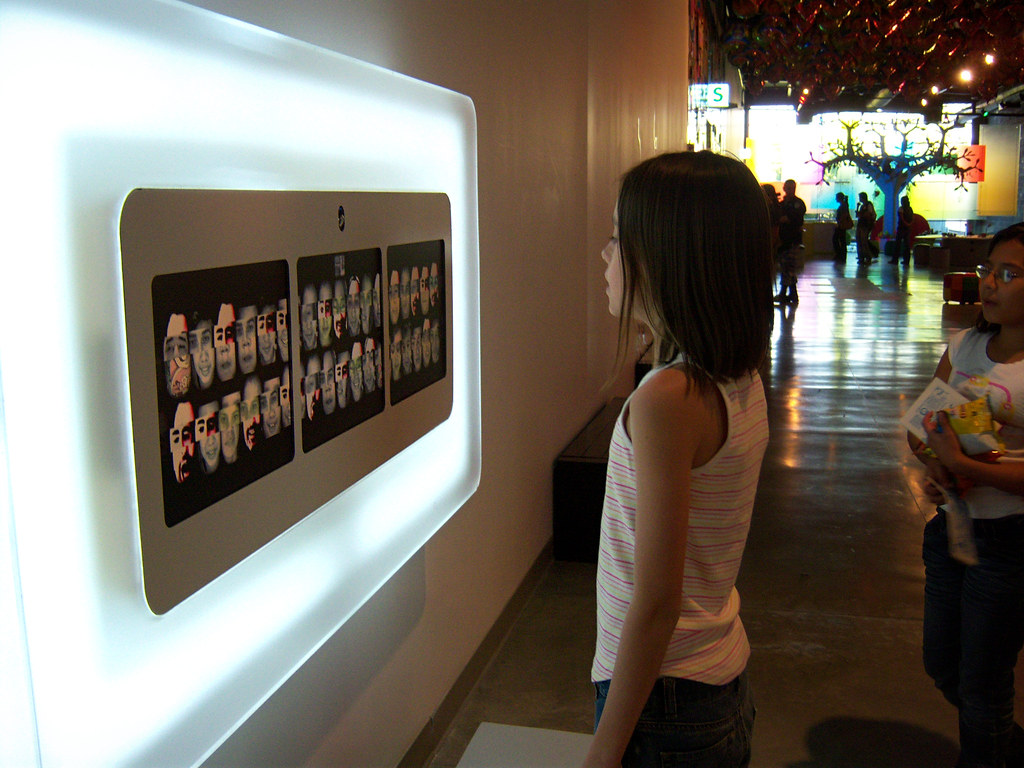Johnston’s Rules of Expressions for Eyes, and Time Travel
3 January 2009 / external, referenceIn The Illusion of Life, classic Disney animators Frank Thomas and Ollie Johnston present their highly influential “12 Rules for Animation“, which have all sorts of implications for interactive technologies. I just came across Ollie Johnston’s more specific 12 Rules for Expressions, which I reproduce below. Two rules which particularly caught my eye (pun) are nos. 10 and 11, which pertain to the use of blinking and gaze adjustments to anticipate other actions in the animation:
- Guidelines for showing the expression change:
- Avoid making a fast body move while changing the expression.
- Change your expression before or after the body move.
- Don’t lose the expression change in an active secondary action. (E.g., clothing catching up with a body move.)
- Don’t try to tell too much in one drawing. Work out the idea over a series of drawings.
- Don’t let facial expressions conflict with dialogue: The idea behind the words should suggest expression.
- Be sure you have the right staging to show all the expression in your scene to best advantage:
- Long Shot, medium shot, close up.
- Straight-on, 3/4, Bird’s eye, + Worm’s eye views.
- Have you the right expression to show what your character is thinking? Are all the parts of the head & face related to this one idea?
- The expression of the idea behind the words must be captured throught the whole body as well as in the face. But remember: that expression originates in the eyes.
- It is the change of shape of the eyes that shows what the character is thinking, It is the thinking that gives the illusion of life.
- Avoid looking up (worm’s eye view) for a frown unless it is a sinister domineering frown.
- Don’t hide a smile with the head tilted down too far, or behind a big nose or mustache.
- Eyes in close-up should move 3 frames ahead of accent.
- In a blink, eyes should close 3-4 frames ahead of accent.
- Always remember: in character animation, all the different parts of the character – head, eyes, mouth, body & limbs, clothing – start and stop moving at different times, and move at different rates. […] In other words, the starts and stops for different actions will overlap.
I love the precision of Johnston’s specification. Three to four frames’ worth of time, in traditional 24fps animation, is between 125-160 milliseconds. Considering that “the consensus in the modern kinesiology community that Simple Reaction Time, called SRT, takes an average of 150 milliseconds to decide to take an action”, we see that Johnston is using subtle modulations of eye animation to allow his viewer enough time to come to the same conclusion as his animated characters.
One of the shortcomings I’ve felt with my Opto-Isolator interactive eyeball sculpture is that it seems a little… less intelligent than I would like. I think Johnston’s rules about oculesic anticipation explain why. I need my robot to respond to actions 150 milliseconds before they happen! Given the machine’s fixed reaction time of 30 milliseconds for its vision processing, and another 20-50 milliseconds to overcome inertia in the motors, I can see that I’m really starting to have a serious need for an OEM version of Gondry’s one second time machine….

